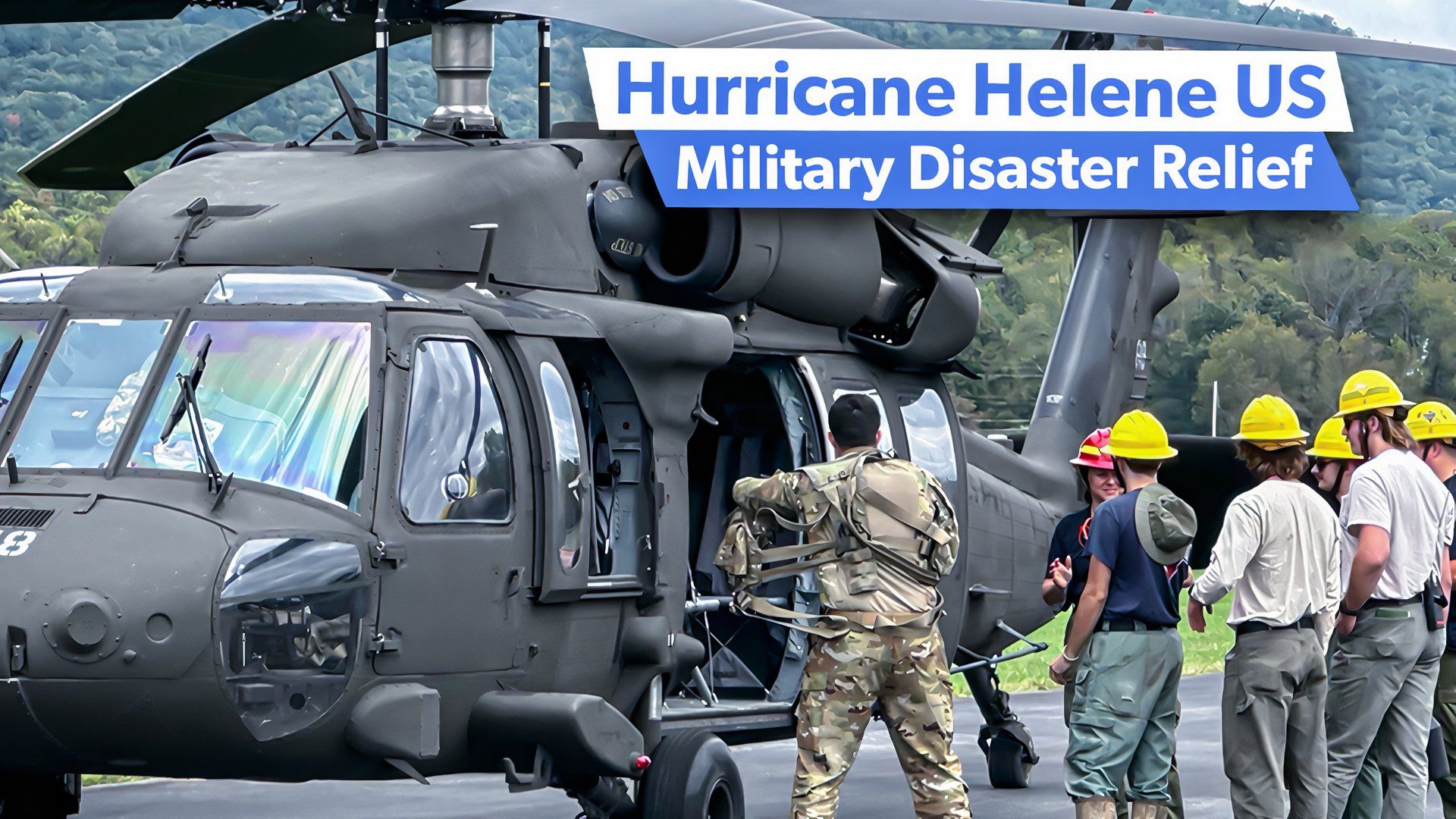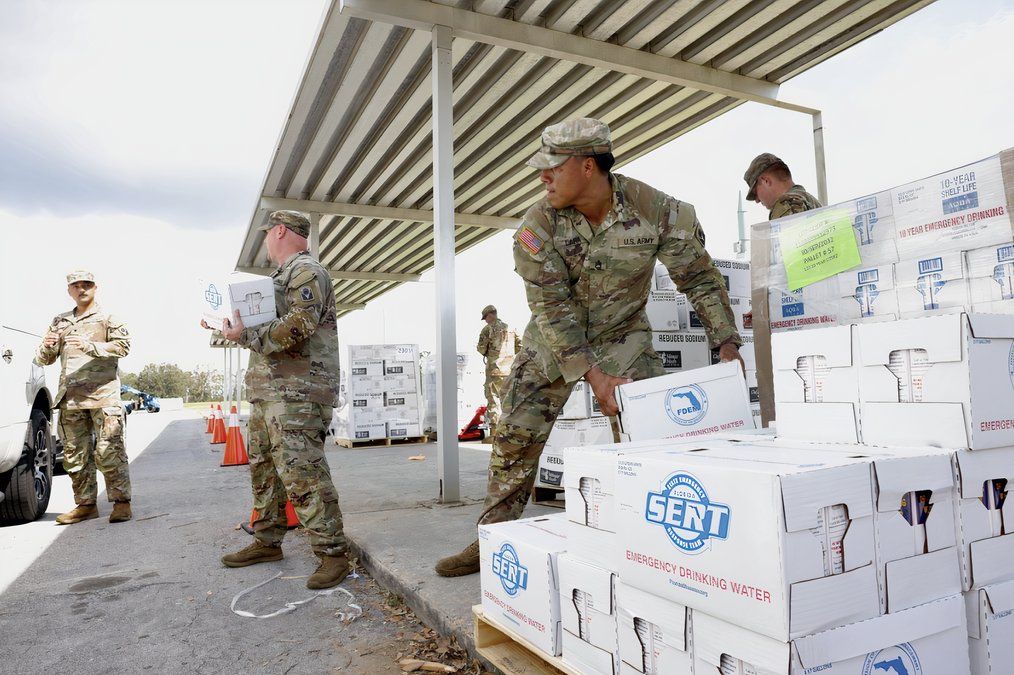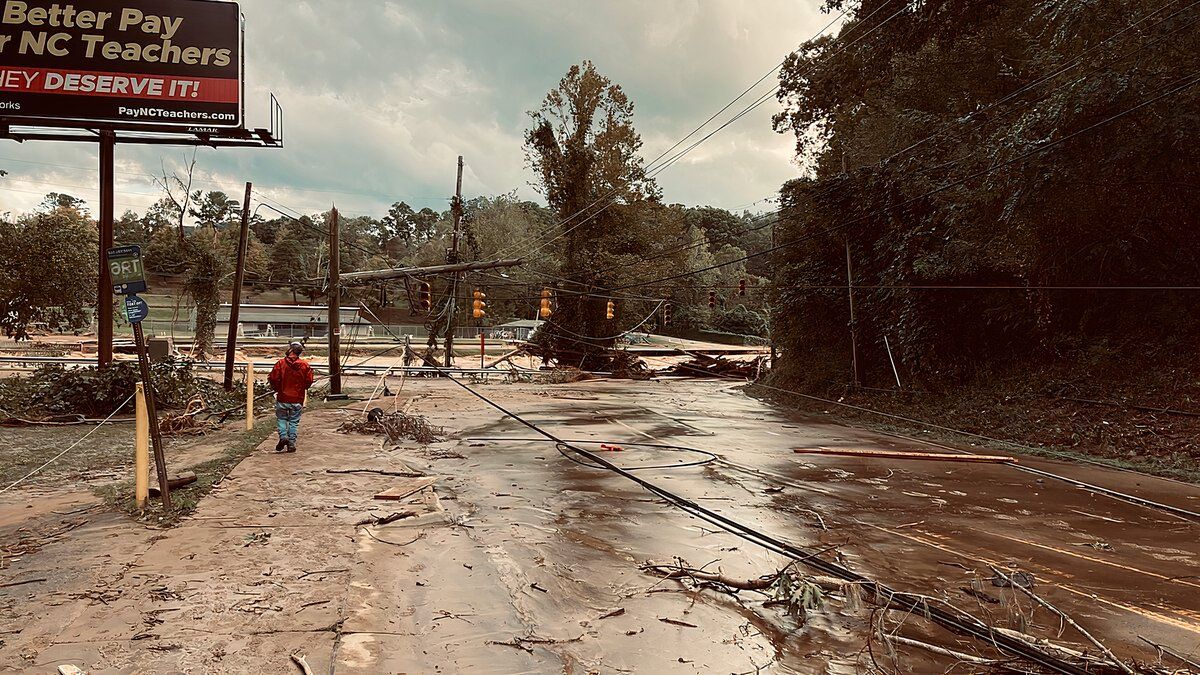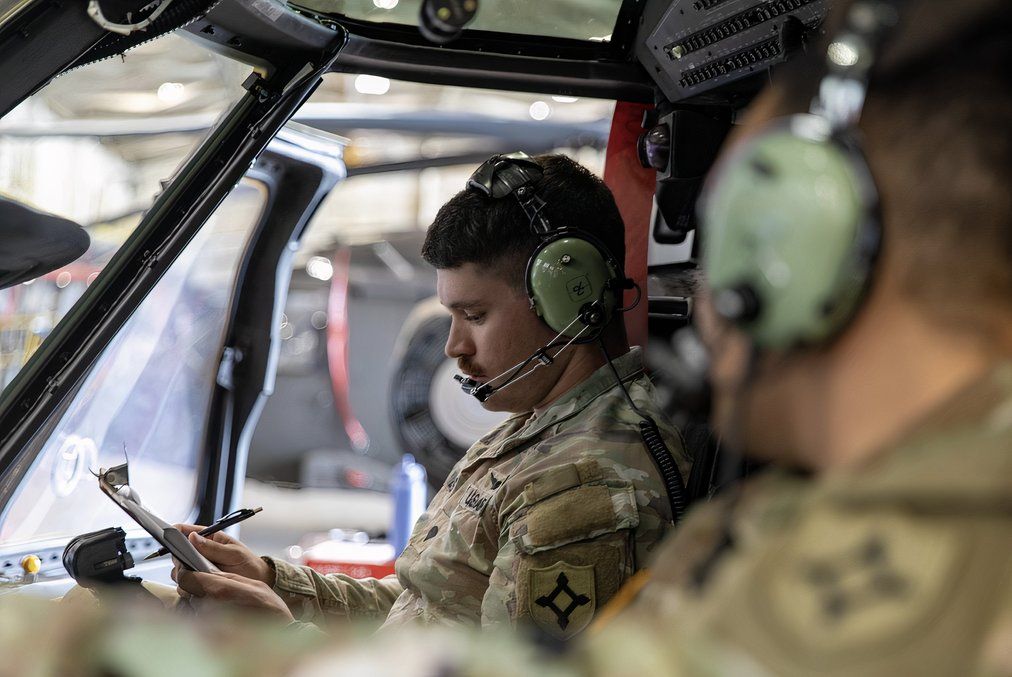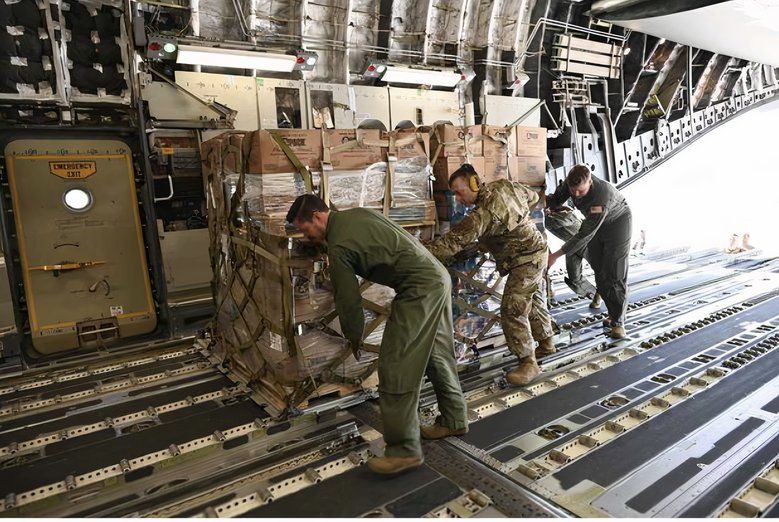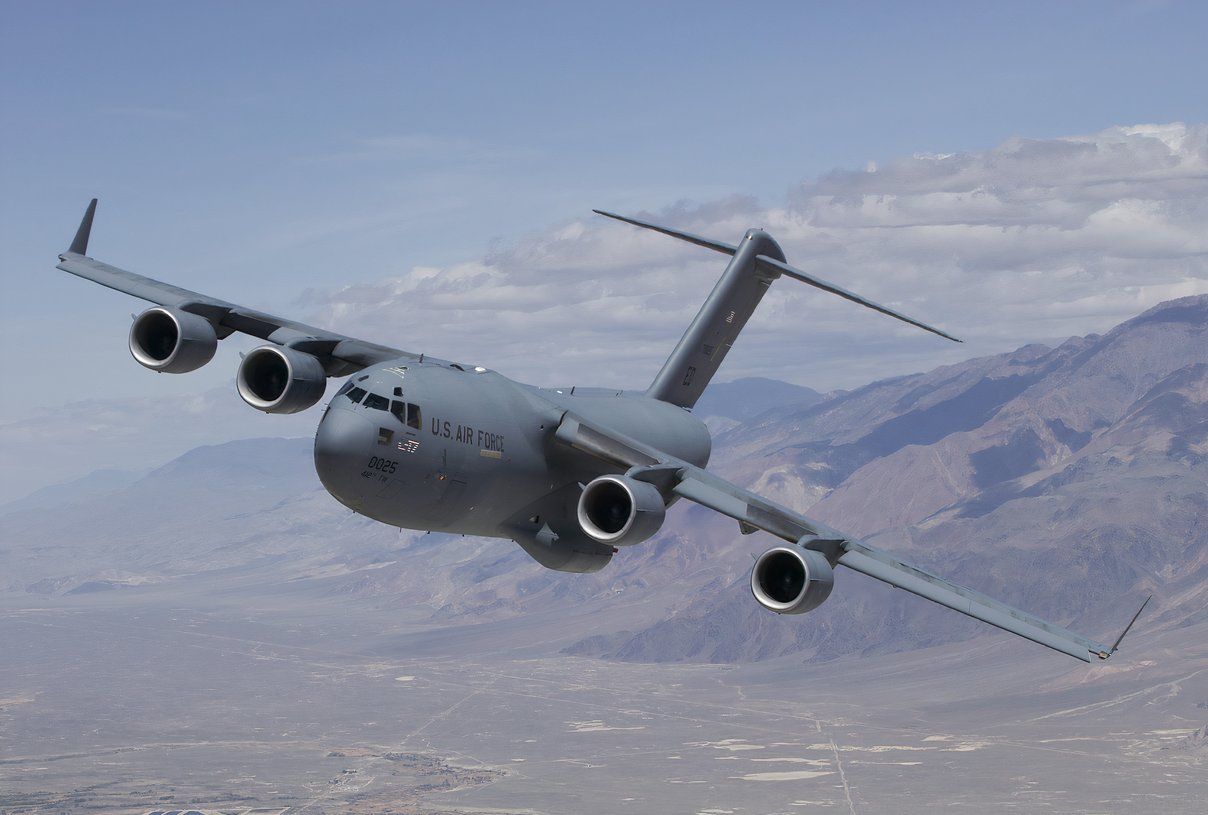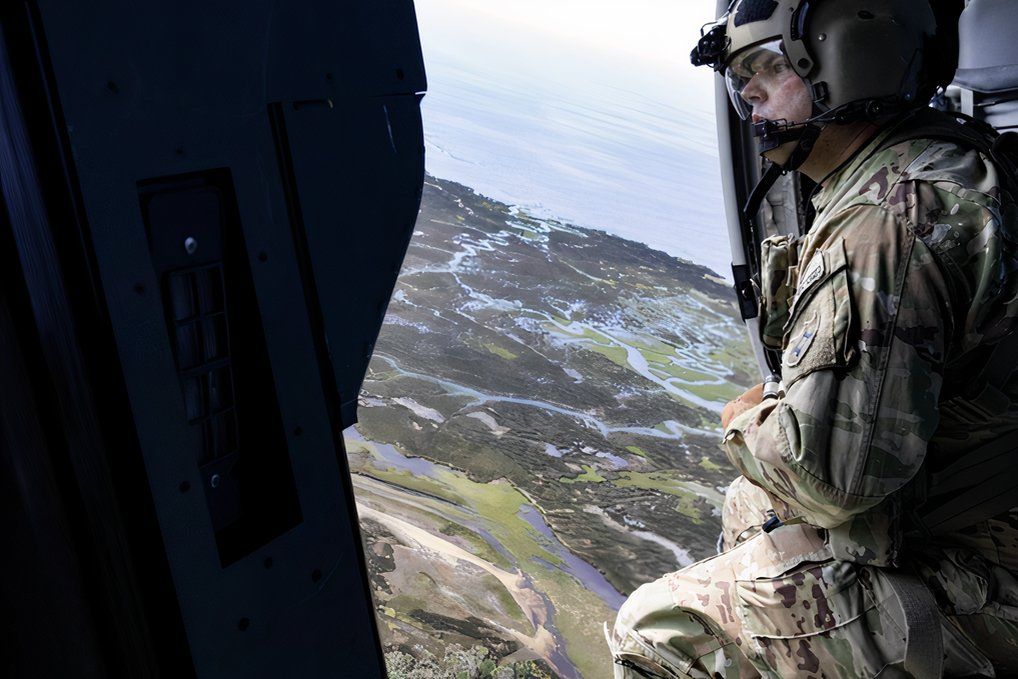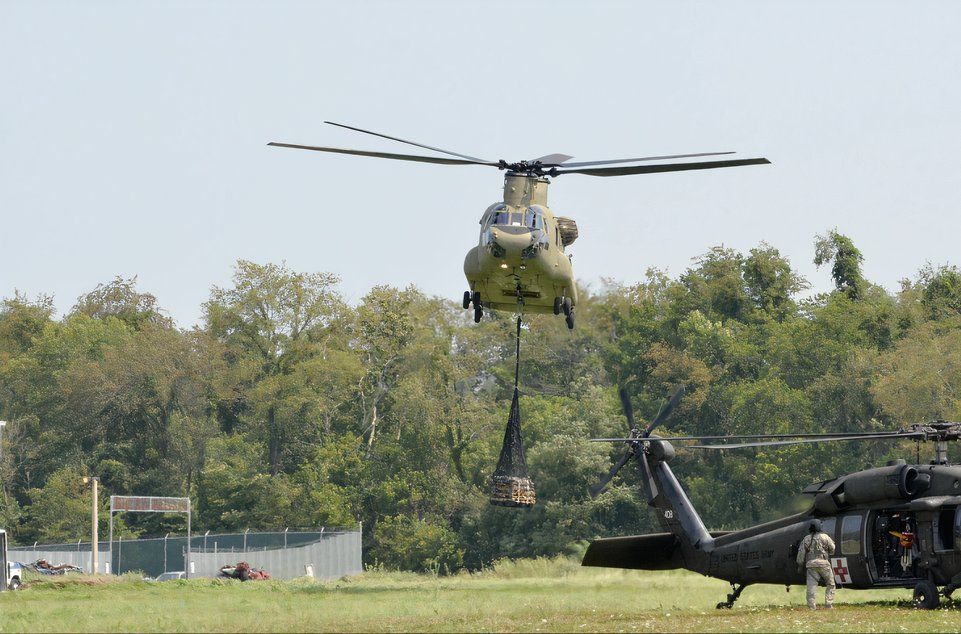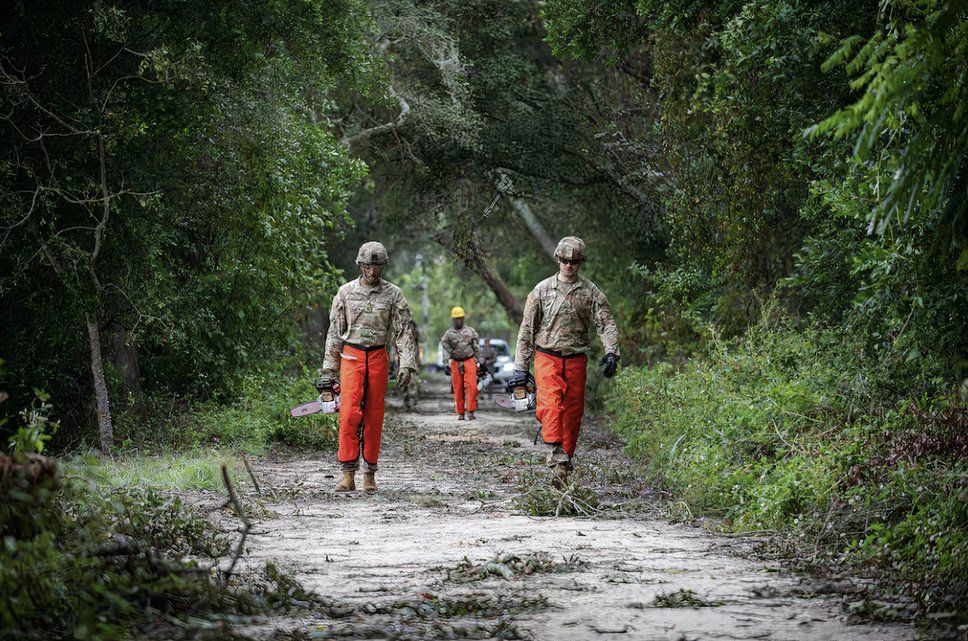Hurricane Helene wrought an incredible disaster for the Florida Panhandle region and beyond. In the aftermath, America’s active-duty Military
, including the National Guard sprang into action, carrying out a large humanitarian operation. The carrying capacity and tactical maneuverability of numerous aircraft enabled this.
Before, during, and in the aftermath of a natural disaster, the US military and National Guard are prime assets for disaster relief efforts. They have trained personnel in place who can be deployed to any situation in any geographical location within the United States on short notice.
Photo: U.S. Army |Sgt. Jalen Thomas
Additionally, they have the equipment and the necessary materials to surge into place in response to the disaster. What supplies these organizations lack can be rapidly procured and moved into the disaster zone once operations have begun.
Destroyer of worlds: Hurricane Helene
Hurricane Helene was a massive, highly destructive Category 4 hurricane that left wide-ranging destruction across a 500-mile area, stretching from the Big Bend area in Florida to the Southern Appalachian Mountains.
Photo: Bill McMannis | Wikimedia Commons
As it stands today, Helene has caused in excess of 200 confirmed deaths and left millions without power or access to water across at least five states. Additionally, whole communities have been cut off, as the floodwaters have essentially erased hundreds of roads, buildings, homes, and vehicles.
The response
According to the Department of Defense, at the request of FEMA, Secretary of Defense Austin:
“…has authorized the movement of up to 1,000 active-duty Soldiers to support the delivery of food, water, and other critical aid “over the last mile to the point of need” to communities impacted by Hurricane Helene.”
Photo: U.S. Army | Pfc. Eli Johnson
The active-duty personnel and their equipment will be utilized in the following ways:
-
The US Army and
US Navyhelicopters, soldiers, and Sailors are providing critical capability to move personnel and supplies in areas where road access is not available or viable.
- US Air Force aircraft, helicopters, and Airmen provide search-and-rescue capabilities.
- US Army soldiers and high-wheeled vehicles move personnel and supplies over roads and terrain damaged or impassable to normal vehicles.
- Army Corps of Engineers Temporary Power Teams and subject-matter experts supporting debris removal, water and wastewater management, and bridge inspections.
Photo: USAF
The C-17 Globemaster, the Air Force’s primary long-distance hauler
|
General Characteristics |
|
|
Primary Function |
Cargo and troop transport |
|
Prime Contractor |
Boeing Company |
|
Power Plant |
4x Pratt & Whitney F117-PW-100 turbofan engines |
|
Thrust |
40,440 pounds, each engine |
|
Wingspan |
169 feet 10 inches (to winglet tips) |
|
Length |
174 feet |
|
Height |
55 feet 1 inch |
|
Cargo Compartment |
length, 88 feet; width, 18 feet; height, 12 feet 4 inches |
|
Service Ceiling |
45,000 feet at cruising speed |
|
Range |
Global with in-flight refueling |
|
Crew |
Three (two pilots and one loadmaster) |
|
Aeromedical Evacuation Crew |
A basic crew of five (2 flight nurses & 3 medical technicians) is added for aeromedical evacuation missions. Medical crew may be altered as required by needs of patients. |
|
Maximum Takeoff Weight |
585,000 pounds |
|
Personnel carrying capacity |
102 troops/paratroops; 36 litter and 54 ambulatory patients and attendants; 170,900 pounds (77,519 kilograms) of cargo (18 pallet positions) |
|
Unit Cost |
202.3 million (fiscal 1998 constant dollars) |
|
$202.3 million (fiscal 1998 constant dollars) |
|
|
Date Deployed |
June 1993 |
|
Inventory |
Active duty, 157; Air National Guard, 47; Air Force Reserve, 18 |
Details provided by the USAF
The active-duty soldiers are supplemented by over 6,500 National Guard soldiers, mobilized from Florida, Georgia, North and South Carolina, Tennessee and Virginia. They will be aided by Guard soldiers from Maryland, Pennsylvania, Connecticut, New York, Ohio, and Iowa. These guard soldiers have been deployed with dozens of helicopters, rescue boats, and high-wheel vehicles.
Photo: USAF
Military aviation and the crucial role it plays in the recovery effort
The central purpose of a disaster relief operation is to orchestrate the transportation of first-aid materials, food, essential equipment, and personnel from central distribution hubs to their numerous and scattered points of need throughout the affected region as quickly and effectively as possible. Additionally, and just as importantly, the outward-bound transport of the survivors to medical centers and temporary living quarters must be coordinated.
Photo: U.S. Army | Pfc. Eli Johnson
The actions of active-duty US military personnel and the National Guard have initiated the aforementioned basic guideline for disaster relief.
According to the National Guard:
“The vital supplies, including 48 pallets of Meals Ready to Eat and 24 pallets of water, were flown on a C-17 Globemaster III from Charlotte-Douglas International Airport to Asheville Regional Airport, which has become a central distribution hub due to impassable roadways caused by flooding and debris. The rural communities in the storm’s path have been cut off from regular supply routes due to severe damage to roads, making ground transportation nearly impossible. The choice to use the C-17 Globemaster III was strategic, allowing the NCANG to deliver the equivalent of three fully loaded semi-trucks in just 30 minutes of flight time — a stark contrast to the seven hours it would have taken for ground vehicles to navigate the hazardous conditions.”
H-47 Chinook (Heavy–lift Helicopter)
|
Specifications |
Numerical Data |
|
Dimensions |
|
|
Rotor Diameter |
60 feet |
|
Rotors unfolded |
98 feet, 10.7 inches |
|
Rotors folded |
50 feet, 9 inches |
|
Fuselage |
51 feet, 2 inches |
|
Height (overall) |
10 feet, 7.8 inches |
|
Fuselage Width |
12 feet, 5 inches |
|
Static forward |
7 feet, 6 inches |
|
Idling forward |
10 feet, 11 inches |
|
Fuel Capacity |
1080 gallons |
|
Propulsion |
|
|
Powerplant type |
2x Honeywell T55-GA-714A engines producing 4,777 shp (3,529 kW) each. |
|
Performance (Standard day, sea level) |
|
|
Maximum Speed |
170 KTAS |
|
Cruise Speed |
157 KTAS |
|
Mission Radius |
165 nm |
|
Service Ceiling |
20,000 feet |
|
Max Gross Weight |
54,000 lbs. |
|
Useful Load |
27,700 lbs. |
Photo: U.S. Army
The National Guard is said to have deployed 46 helicopters across the affected region. The fleet includes
CH-47
Chinooks, UH-60 Blackhawks, HH-60 Pave Hawks, and L/UH-72 Lakotas.
Specifically in Tennessee and according to Defense Visual Information and Distribution Service:
“Tennessee Guardsmen are currently providing 24-hour, ground and aerial rescue and relief support. Since flooding began, servicemembers from the 1-230th Assault Helicopter Battalion, based at Knoxville’s Joint Base McGhee-Tyson and Nashville’s Berry Field, have rescued over 100 citizens, transported over 34,000 pounds of drinking water, food, generators, and other equipment to those in need. They also performed 11 reconnaissance missions surveying dams, bridges, roadways, and other critical infrastructure to begin repairs.Today, these aviators are continuing rescue and relief operations throughout the affected counties.”
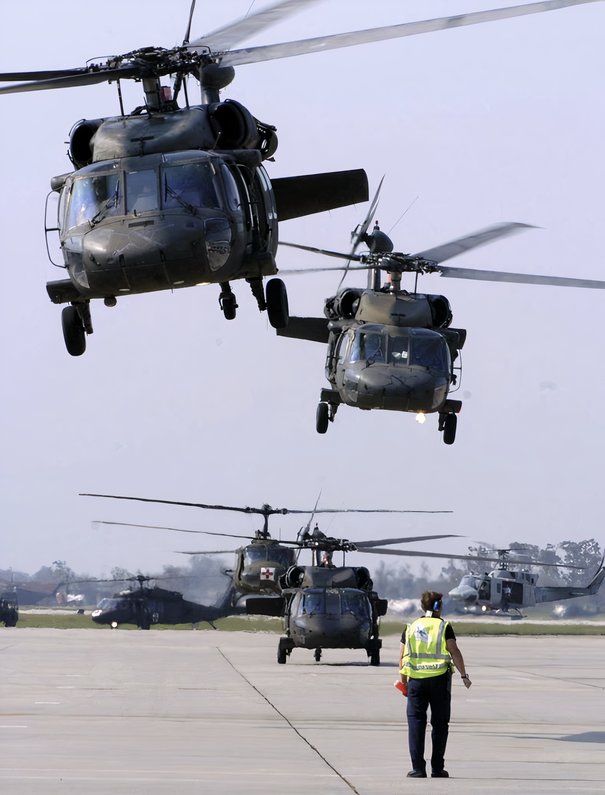 The UH-60 Blackhawk (Multi-Mission Performer)
The UH-60 Blackhawk (Multi-Mission Performer)
|
Specifications |
Numerical data |
|
Capabilities |
|
|
Crew / total weight |
3/725 lb. |
|
3 / 725 lb. |
|
|
Troops / weight/each |
11 / 240 lb. |
|
Cargo hook capacity |
8,000 lb. |
|
Performance |
|
|
Weight empty |
11,284 lb. |
|
Primary mission gross weight |
16,994 lb. |
|
Maximum gross weight (slick configuration) |
20,250 lb. |
|
Cruise speed (16,800, 4,000 ft, 95ºF @ 100% MCP) |
140 kts |
|
Vertical rate of climb, feet per minute – 16,800 lb, 4,000 ft, 95ºF, 95% IRP – 18,000 lb, 4,000 ft, 95ºF, 95% IRP |
377 0 |
Details provided by Sikorsky (A Lockheed Martin Company)
The rescue and relief efforts are ongoing
Hurricane Helene was one of the worst disasters to hit the United States in many years. Tragically, it is highly likely that the reported fatalities caused by this hurricane will only increase in the ensuing days and weeks.
The disaster relief effort by the active-duty U.S. military, National Guard, FEMA, and private organizations is incredible, and they are truly heroes. These amazing relief personnel are aided by a strong backbone of military and, to some extent, private aviation.
Photo: U.S. Army | 1st Lt. Brandon Miles
These aeronautic assets provide the strategic and tactical movement of rescuers, supplies, and equipment to the exact locations where they are needed. The C-17s move the supplies and personnel to the regional, primary hub of operations. From there, they move out into the field via helicopter. The helicopter fleet provides precise and timely delivery to relief personnel and needed aid supplies.
While we are witnessing the aftermath of a horrific tragedy that has affected millions of Americans, we are also witnessing the incredible capabilities of the US military and National Guard and their aviation assets to render life-saving aid.
God Bless our military, first responders, and aid workers.

